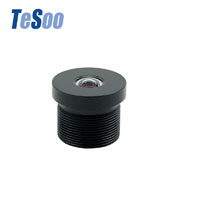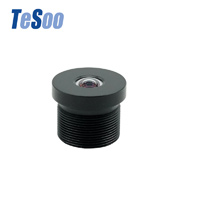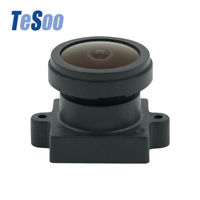Classification and Function Analysis of ADAS Camera Lens
In recent years, the installation rate of advanced driver assistance systems (ADAS) in vehicles is rapidly increasing. Looking at major manufacturers, these technologies are mainly focused on level 2-3 autonomous driving, and to achieve these functions, the use of automotive camera lenses in single vehicle perception systems is generally five or more.
Where are these camera lenses installed? What are they called? Today, we will discuss this together.
There are several methods for classifying existing camera lenses: according to the number of CMOS camera lens, they are divided into single and dual lenses; and according to the camera's viewing angle, they are divided into wide-angle and fisheye lenses.
Front-view camera lens
Installation location: generally on the windshield or near the rear-view mirror.
Used for front driving assistance, the front camera lens, which generally has a 45° viewing angle, is mainly used to identify road vehicles and pedestrians in front. The image sensor and DSP-extended dual-core MCU work together to provide input video frames for image processing and monitor the road ahead, enabling functions such as forward automatic emergency braking, lane departure warning, and adaptive cruise control.
The front-view automotive camera lens is typically a single/dual camera lens, with better dual-lens ranging performance, but more complex algorithms and higher prices. The number of camera lenses at the front-view camera lens is not fixed, and features three camera lenses:
Front narrow-angle camera lens with a maximum monitoring distance of 250 meters;
Front main-view camera lens with a maximum monitoring distance of 150 meters;
Front wide-angle camera lens with a maximum monitoring distance of 60 meters.
The front-view camera lens is a core camera lens for ADAS, covering ranging, object recognition, and road marking. Therefore, the algorithm is complex and the threshold is high.
Surround-view camera lens
Installation location: vehicle front and rear badges (or nearby) and a set of camera lenses integrated into the left and right rearview mirrors.
The surround-view camera lens, also known as a panoramic image monitoring system, is used to identify parking aisle signs, road conditions, and surrounding vehicle conditions. The vehicle provides 360-degree imaging using images from multiple camera lenses. Due to the demand for detecting vehicle surroundings, it is generally installed at the vehicle's front badge or grille.
Currently, front-view and surround-view are the most widely used automotive camera lenses.
Side-view camera lens
Installation location: left and right rearview mirrors or below the vehicle body.
The lateral camera lens is mainly used for blind spot detection (BSD), and can achieve front or rear viewing depending on the installation location. Currently, most OEMs choose to install these camera lenses under the rearview mirrors on both sides of the vehicle. In the future, traditional optical rearview mirrors may be replaced with camera lenses, becoming electronic rearview mirrors using CMS camera lenses.
Rear-view camera lens
Installation location: generally installed on the trunk or rear windshield.
The rear-view camera lens is mainly used to capture the image of the rear of the vehicle during the backup process, enabling parking assistance.
Built-in camera lens
Installation location: no fixed location, but located in the steering wheel, above the rear-view mirror, on the A-pillar, or integrated with the instrument display screen.
Since current autonomous driving is only at level 2-3, human intervention is still required. Therefore, the driver monitoring system (DMS) has become a solution in ADAS. The current DMS solutions mainly use AI recognition of near-infrared camera lenses. This automotive camera lens is located in front of the driver and can fully capture the facial information of the driver.
In addition, some OEMs have extended the DMS system to an occupant monitoring system (OMS), which can effectively prevent rear-seat infants or children from being forgotten in the vehicle.
Popular Camera Lens
Hot Camera Lens Articles

 English
English 

